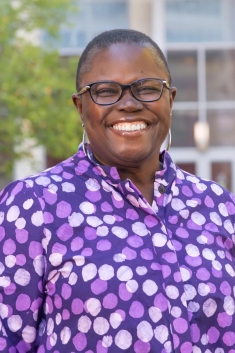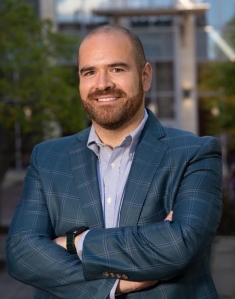Legal Issues to Watch in 2023
Several decisions and upcoming hearings in the past year by the U.S. Supreme Court, and lower-level courts, are having far-reaching consequences not just for the American public now but for the future of American law. We asked Rutgers Law professors in Camden and Newark for their outlook on the most pressing legal issues in 2023.

Reproductive Rights
In 2023, the fallout from the U.S. Supreme Court’s Dobbs decision overruling Roe v. Wade will continue to be felt around the country. The legal landscape will shift as state legislators pass bans and advocates challenge those bans in state courts. It is possible that about ½ of the states will either ban abortion completely or substantially by the end of 2023. Some of the legal challenges to these laws will focus on religious freedom, such as a suit filed in Indiana that challenged that state’s hastily passed abortion ban based on a claim that it violated the state’s religious freedom law. In other states, challenges have been or will be filed based on privacy or gender based protections found in state constitutions. We can also expect more battles between the federal government and states over issues of preemption such as whether a state abortion ban can supersede the protections of EMTALA, the federal law that requires hospitals that participate in Medicaid to provide emergency treatment to stabilize patients regardless of an individual’s ability to pay. A District Court judge in Texas has already weighed in on this issue coming down on the side of the states that ban abortion but the litigation is far from over. Similar issues may become salient if, and when, states begin attacking access to the pills used for medication abortion that are also prescribed to treat other non-abortion related ailments. On the other side of the pendulum, some states, like New Jersey, have been ramping up to protect abortion providers and abortion patients. Luckily, for those of us who follow these issues closely, there are resources such as the State Court Abortion Litigation Tracker, created by the Brennan Center for Justice and the Center for Reproductive Rights, which provides a frequently updated chart of litigation that will prove to be invaluable in the months to come.

Clinical Education and Director of the Immigrant
Rights Clinic
Refugee Asylum
Between 2017 and 2021, the Trump Administration waged an unprecedented battle on U.S. asylum structure, procedure, and substantive law. Seeking to alter long-standing legal principles and practices in a host of areas, the former administration’s efforts to demolish asylum protections were systematic and comprehensive. The Immigration Policy Tracking Project cataloged no fewer than 96 discrete policy and regulatory changes that the former administration implemented to curtail access to asylum. While some of the administration’s actions, such as the decision to separate children from their parents at the border, were carried out in the open, many other actions were largely hidden from public view. In their totality, scholars have characterized those changes without much hyperbole as the end of asylum in the U.S., a veritable administrative wall to refugees.
Despite widespread initial optimism upon the election of a new president and some incremental steps, the Biden Administration has yet to roll back the majority of these changes, let alone take steps to expand access to asylum or increase fairness in the system. Within his first month in office, President Biden promised to undertake a comprehensive review of the U.S. asylum system and promulgate regulations consistent with our international legal obligations within 270 days; however, that deadline has come and gone without any proposed regulations or an explanation for their absence. The next year or two will reveal whether Congress or the Administration are willing to act to protect refugees and asylum seekers and to protect our refugee and asylum systems from abuses in the future.
*Adapted from Charles S. Ellison & Anjum Gupta, Dismantling the Wall, 120 Mich. L. Rev. Online 1 (2022).

Affirmative Action
This year marks the 20th anniversary of the Supreme Court’s seminal 2003 ruling in a pair of cases involving the University of Michigan in which the Court endorsed the use of race in admissions as one among many factors that colleges and universities may consider in trying to achieve student body diversity. Despite having affirmed that decision again most recently in 2016, the Court seems poised to reverse that decades-old ruling this term. This time, the pair of cases before the Court involve Harvard University and the University of North Carolina, but the issue remains unchanged. The question before the Court is whether race is ever a permissible consideration for colleges and universities when making decisions about which students to admit. Although the answer has, since 2003, been 'yes' if the use of race is necessary to achieve student body diversity, it seems there are at least five (perhaps six) members of the Court now prepared to say that the consideration of race is never necessary to achieve student body diversity. There might even be some Justices willing to say that racial diversity itself is not a permissible interest for colleges and universities to pursue at all. Such a ruling would mark a radical shift in the Court’s treatment of race in college admissions for more than four decades. What has changed in those four decades, and more precisely in the last 20 years? The most notable change is the composition of the Court itself.
All of the prior decisions by the Court on the issue of race in college admissions (dating back to 1978) were rendered by a closely divided Court, with the decision often split 5:4 along ideological lines. In all of the past cases, a moderate Justice has cast the deciding vote to uphold the use of race in college admissions. Today, with three sitting Justices appointed by President Trump, the Court is dominated by a 6:3 conservative “super majority.” That will likely make all the difference in the Court reaching a different result in these cases than it has reached in every past case on this issue. Most Court observers predict a loss for Harvard and UNC. What the decision will mean for colleges and universities more broadly remains to be seen. Although many colleges and universities are likely to employ other means of achieving student body diversity, if consideration of race is prohibited by the Supreme Court, how far these schools will be willing, or even able, to go in pursuit of student body diversity will depend on whatever new limits the Court imposes in the pending cases. In addition to waiting and watching for the Supreme Court’s decision in these cases, many will be just as eager to see how colleges and universities alter their admissions practices in response to these decisions.
June 2023 decisions: Students for Fair Admissions. Inc v. President and Fellows of Harvard College

Judge Raymond J. Dearie Scholar
Environmental Protection
Water: The modern Clean Water Act turned 50 last year, and we still don't know exactly what are the "waters of the United States" that the statute protects. The Supreme Court gets its say (again) this year in Sackett v. Environmental Protection Agency. I say "again" because this is the second time before the Court for both the Sackett case itself and for the statutory interpretation issue at stake, which the Court last addressed in a fractured opinion in 2006. Everybody agrees that the Clean Water Act authorizes the federal government to regulate dredging and filling of some wetlands. The question is how far that authority, conveyed by those magic words "waters of the United States," extends. It's a question of immense environmental and economic importance. The Biden Administration tried to head off a possible loss with a last-minute regulation, but many environmental law scholars fear that the Court's conservative majority will deal a significant blow to wetland protection.
May 2023 decision: Sackett v. Environmental Protection Agency
Land: In 2022, the Environmental Protection Agency (EPA) proposed to add two chemicals, PFOA and PFOS, to the list of Superfund hazardous substances. These two chemicals are the best-known of a broad class of synthetic compounds often called "forever chemicals" because of their extreme resistance to degradation in the environment. If you saw the movie "Dark Waters," you have already learned some of PFOA's history. These two chemicals have become very widely dispersed in the environment. Listing them as Superfund hazardous substances would authorize EPA, States, and Tribes to clean them up -- and to force those responsible for their release to pay for that cleanup. The public comment period on the rule ended late in 2022. It will be interesting to see if EPA follows through with a final rule -- and to see what happens with the court challenges that are sure to follow.
Air: It will be interesting to follow the Biden Administration's continued efforts to do something about greenhouse gas emissions that are warming the planet to an increasingly dangerous extent -- and how those efforts fare in court. Back in 2007, when the Supreme Court decided Massachusetts v. EPA, it looked like the authority to take on climate change via the Clean Air Act was "in." However, an increasingly skeptical Supreme Court majority has been cutting back on that authority ever since. In West Virginia v. EPA, decided at the end of last year's Supreme Court term, the majority used a newly-named and greatly-empowered "Major Questions Doctrine" to seriously limit EPA's powers on the grounds that when an agency wants to take on really big problems it needs to rely on really specific statutory language. Never mind that Congress doesn't actually legislate that way. The "MQD" seems likely to affect vast swaths of rulemaking and to revolutionize administrative law in general, but it particularly bears watching in the fight against climate change, which the current Congress is quite unlikely to address with new legislation.

Union and Labor Laws
In a pair of recently decided cases, the National Labor Relations Board addressed two important shortcomings in American labor law—the inadequacy of the remedies available to workers for violations of the National Labor Relations Act (NLRA) by employers, and the effectiveness of the barriers to unionization the NLRA has been interpreted to permit ERs to deploy in opposing unionization campaigns. In Thryv, Inc. and Int’l Brotherhood of Electr. Workers, the Board announced that henceforth, its orders for make-whole relief for individual workers will expressly include compensation “for all direct or foreseeable pecuniary harms suffered as a result of the respondent’s unfair labor practice.” Up until now, such relief has generally been limited to lost wages. In Steel Const., Inc. and Local 25, Int’l Assoc. of Iron Workers, the Board reinstated a 2011 holding that made it easier for unions to win representation elections by narrowing the grounds on which employers could force a representation election to be held in a larger bargaining unit (containing fewer union supporters) than the bargaining unit the union sought to represent. The 2011 holding, adopted by a Board with a majority of Obama appointees, had been overruled in 2017 by a Board with a majority of Trump appointees.
These changes in the law should make it easier for private sector workers to unionize in the United States, but there is a long way to go before all workers who want union representation get it. Fewer than 10% of private sector production and non-supervisory employees are currently unionized in the United States, despite the findings of a 2021 Pew Research Center Poll that 55% of American adults agree that unions have “a positive effect on the way things are going in the country” and that the “large reduction in the percentage of workers represented by unions has been bad for the country.”

LGBTQ Rights
In 2023, expect to see the Supreme Court rule on a case that could undermine states’ ability to enforce anti-discrimination laws against businesses that arguably engage in creative expression. The case, 303 Creative, LLC v. Elenis, questions whether a business owner can use the Free Speech Clause of the First Amendment as a shield against a state anti-discrimination law.
In 303 Creative, the owner of a company that produces websites for events decided to refuse the business of customers wishing to have websites designed for same-sex weddings. This refusal is a fairly clear violation of Colorado’s state law prohibiting public accommodations discrimination on the basis of sexual orientation, and so the business owner brought a pre-enforcement challenge to the Colorado law. In doing so, the business owner made several legal claims. The one the Supreme Court decided to take up was not, perhaps surprisingly, about the free exercise of religion, although the business owner’s motivation was her religious belief about the nature of marriage. Instead, the Court agreed to consider whether applying a public accommodations anti-discrimination law in a way that compels someone to produce a work of artistic expression that conveys a message they object to violates the Free Speech Clause of the First Amendment.
In oral argument on December 5, a majority of the Court seemed inclined to side with the business owner. However, it struggled with how to apply limiting principles that would prevent a ruling for the business owner from being applied very broadly, to many different types of businesses and many different types of discriminatory refusals of service.
June 2023 decision: 303 Creative, LLC v. Elenis

and Director of the Rutgers Immigrant Community
Assistance Project
Future of DACA
Over 600,000 undocumented young people in the United States continue their education and contributions to our labor force, despite facing overwhelming uncertainty with regard to their legal status. On August 30, 2022, the Biden Administration released its final DACA rule, which was scheduled to take effect on October 31, 2022. This regulation rescinded and replaced the 2012 DACA memo and clarified a few critical issues including the fee structure, definition of a criminal conviction for DACA purposes, and the accrual of unlawful presence. On October 5, 2022, the Fifth Circuit Court of Appeals upheld the district court’s decision in Texas v. United States, striking down DACA for violating procedural and substantive requirements of the Administrative Procedures Act. Although the district court’s injunction permitting renewals for individuals already participating in the program remains in effect, the future of the program is bleak.
This year, we can expect the district court to rule on whether the final DACA rule resolves the procedural and substantive deficiencies previously identified by the court and affirmed by the Fifth Circuit. To succeed in light of the Fifth Circuit’s October decision, the Department of Homeland Security will likely need to take this litigation all the way to the Supreme Court, which may happen as early as the October 2023-2024 term. This will be an uphill battle for the 10-year-old policy as conservative Justices control the high court and have suggested the DACA program overreaches executive authority and contravenes Congressional intent by not only creating a new exception to the statutory provisions governing removal, but also by reclassifying noncitizens as lawfully present and work authorized.
DACA has been life-changing for undocumented young people arriving in the United States as children, for whom this country has been their only home for decades. Congress can resolve this uncertainty for over two million undocumented young people, their mixed status families, their employers, and so many others by passing legislation like the 2021 Dream Act, but this political will has not materialized. Recent polls show overwhelming bipartisan support for a legislative solution with four out of five Americans supporting an earned path to citizenship for Dreamers. Whether Congress will act before the complete collapse of DACA remains unclear.